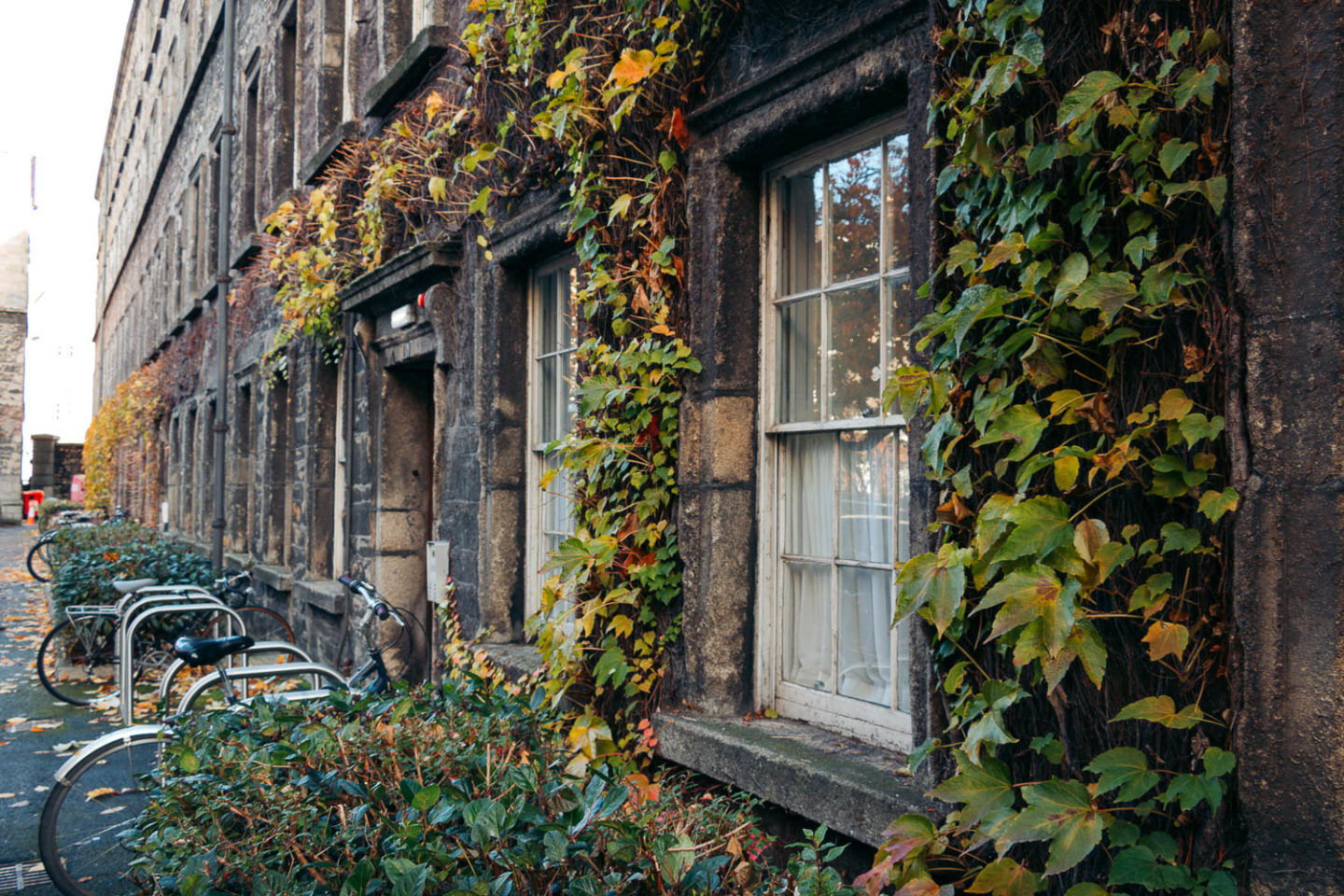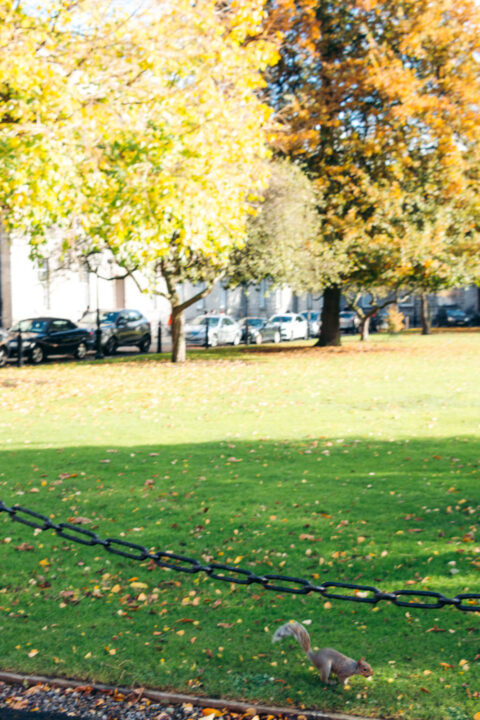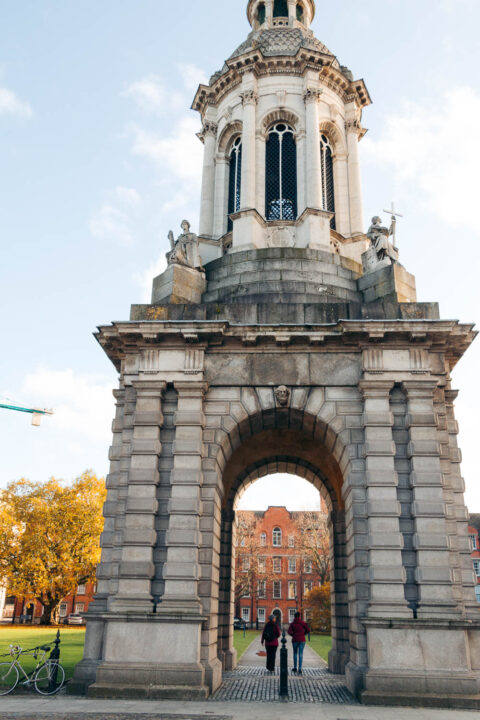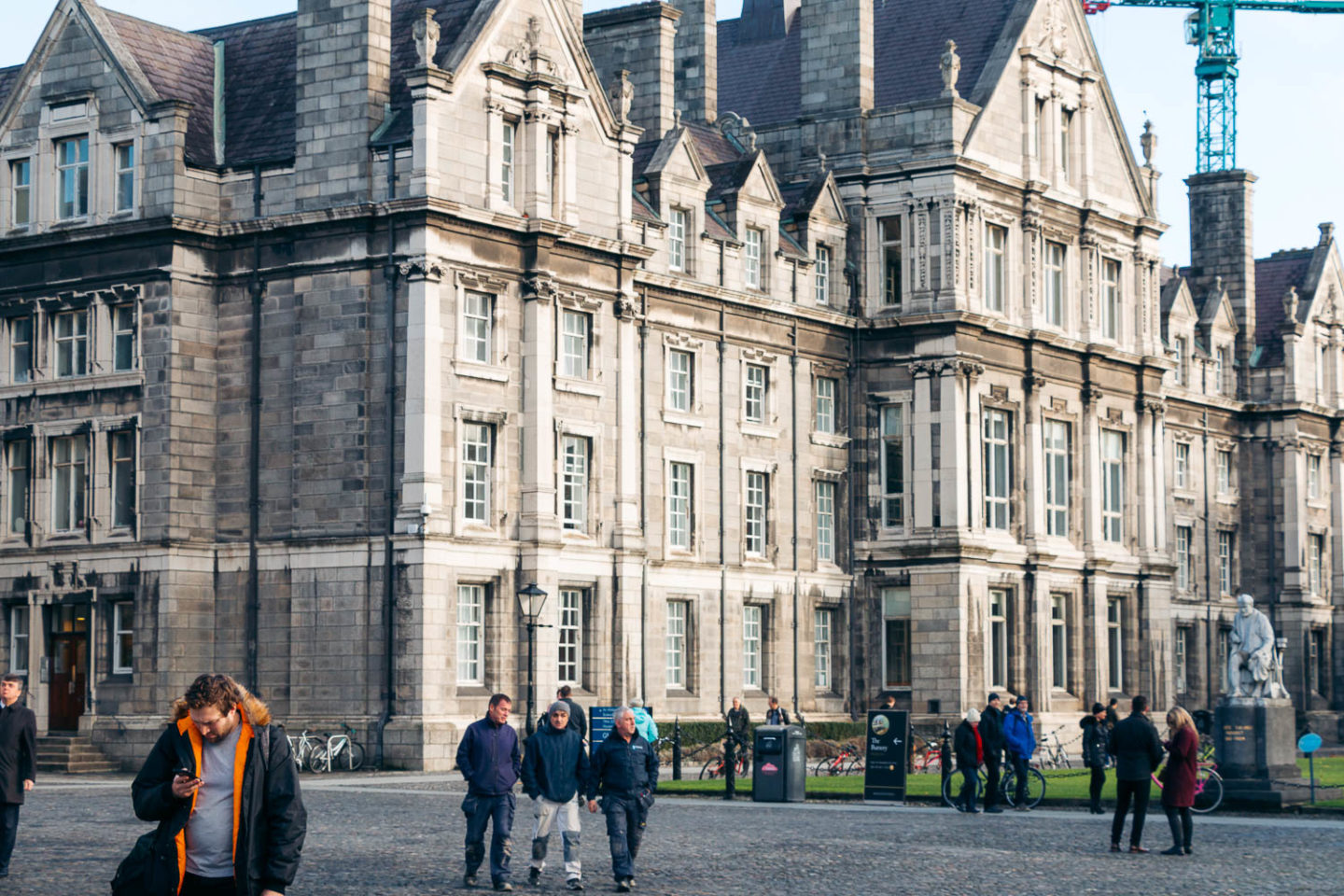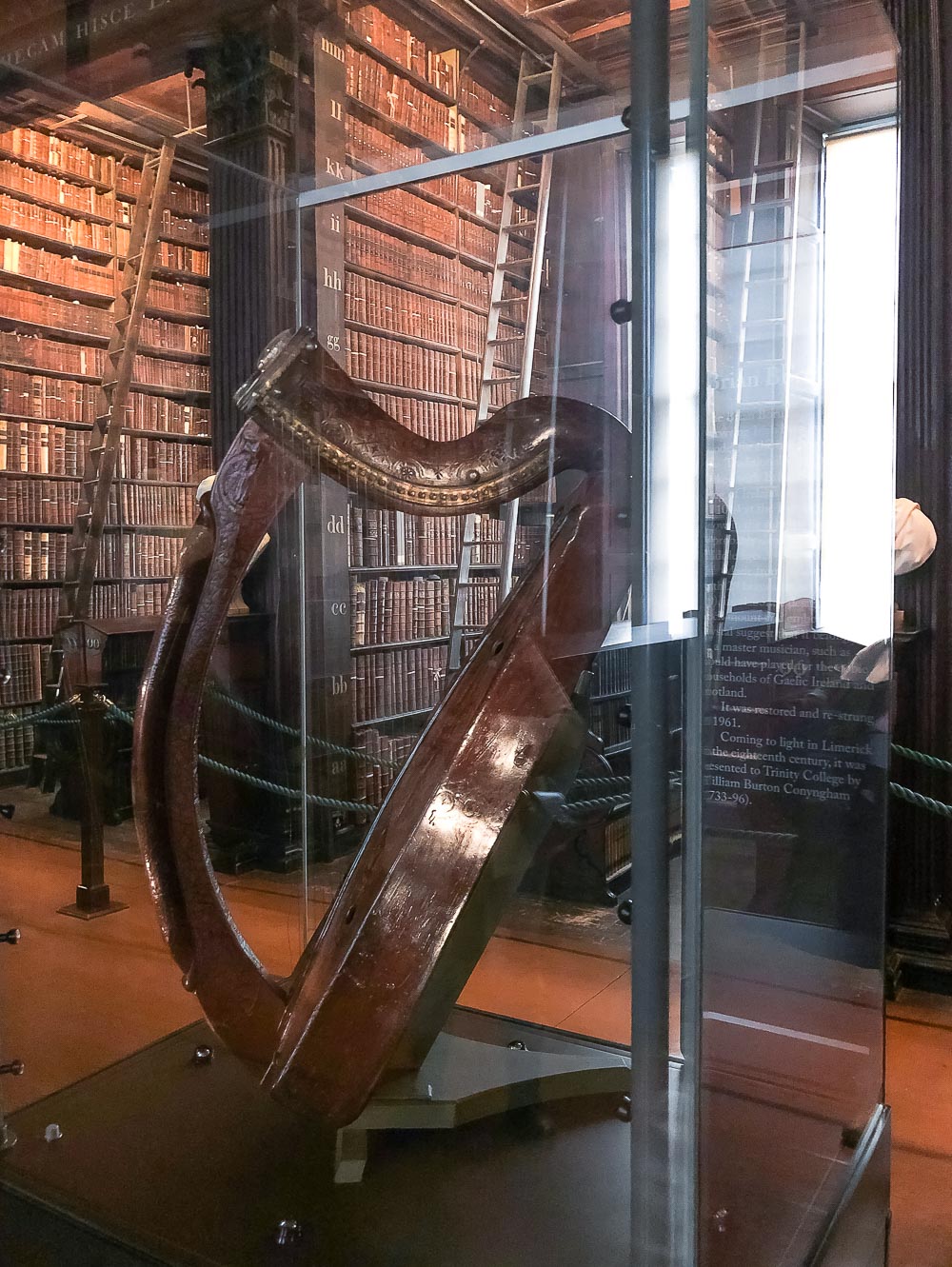One of the most prestigious universities in the world, Trinity College Dublin was packed with both students and visitors, leisurely walking or rushing through the main campus, on an unseasonably sunny morning when I made my way to the university.
Last updated: February 25, 2024
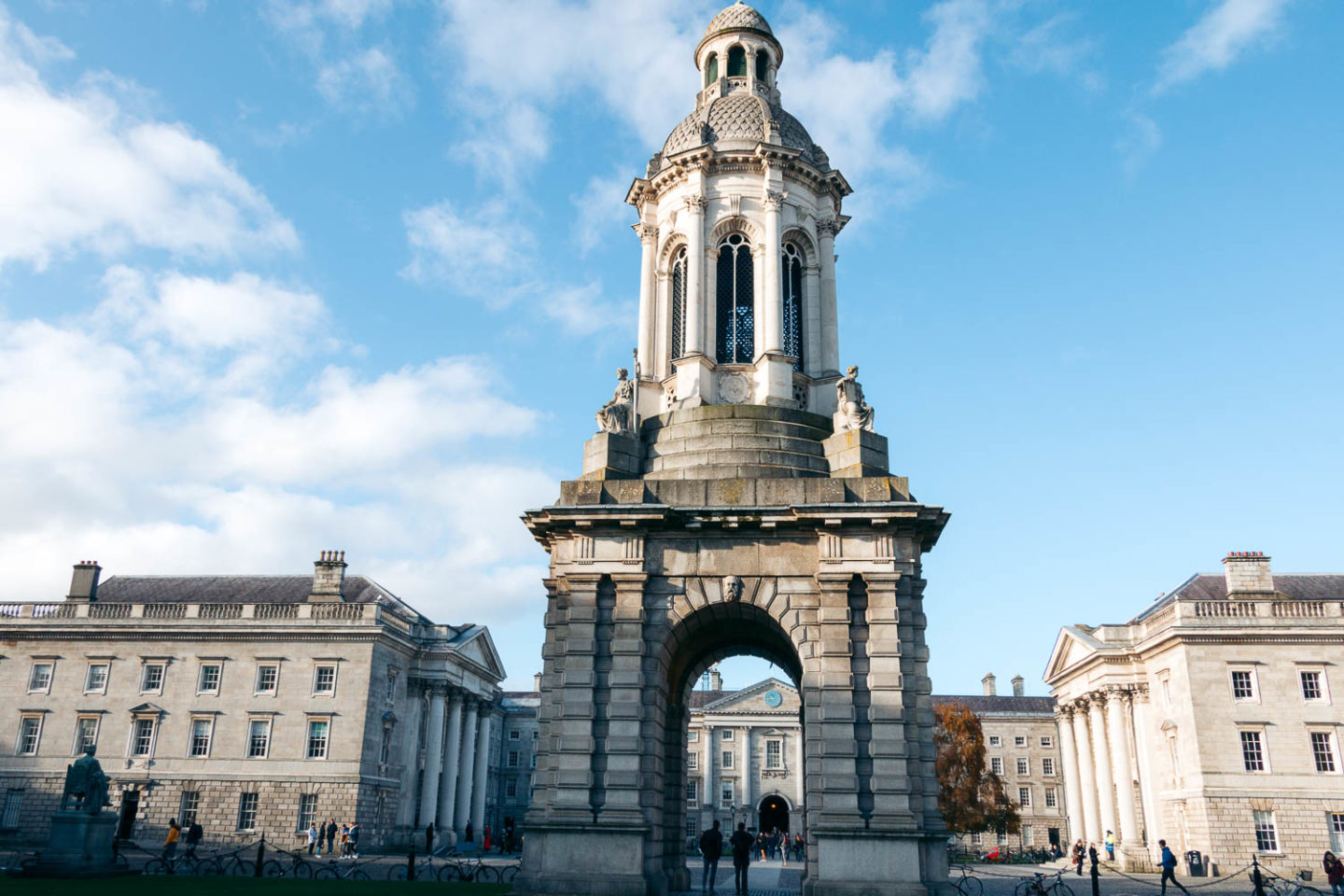
Trinity College Dublin through the Eyes of a Visitor
One of the guides I had read before traveling to Ireland insisted that Trinity College Dublin was one of the first places you needed to visit when in the city. Praising its opulent architecture and academic influence on the world, the article went on dissecting the best places where you as a visitor could take pictures.
A self-guided walking tour through the university, however, wasn’t the first thing I would eagerly add to my Dublin itinerary. But it was Trinity College Dublin, the oldest surviving university in Ireland… So reluctantly, I added it to the list.
Two weeks later, standing in front of a long wall with a narrow gate-entrance to the famous university, I had a second thought.
With only a few entrances cut out in the enclosed wall, Trinity College Dublin looked fortified. The whole structure appeared almost like a place reserved only to a few chosen – students that showed high levels of achievement and educational excellence and faculty staff, even more superior in their knowledge and expertise.
It took me a few seconds to contemplate whether I should’ve entered the ground of this sacred educational institution. The urge to peek inside, to see what Trinity College hid behind its massive wall was great, though.
So, I joined the “flow” of students rushing through the gate at that moment (it must have been the time for lectures to start), and got carried onto the main campus of Trinity College.
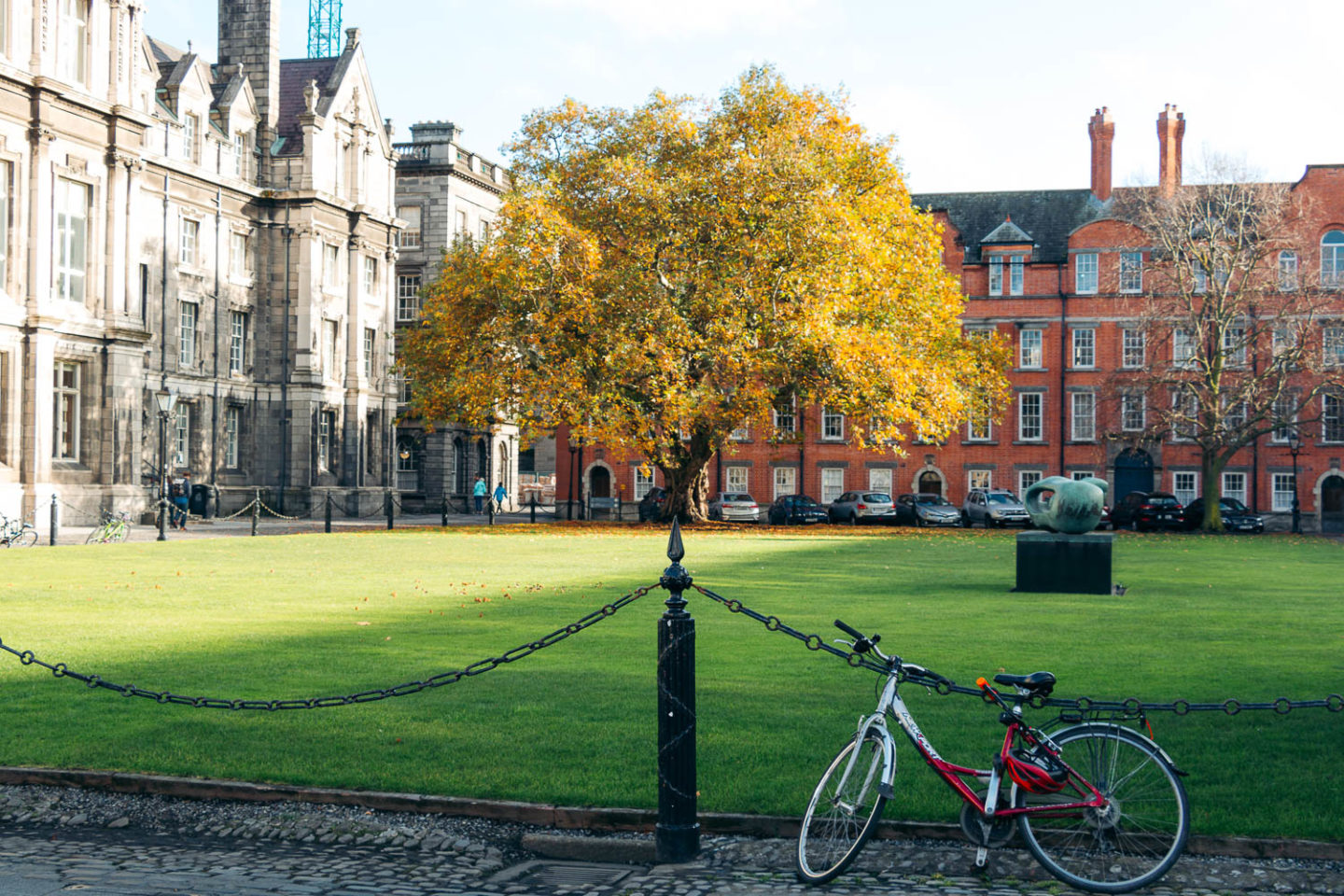
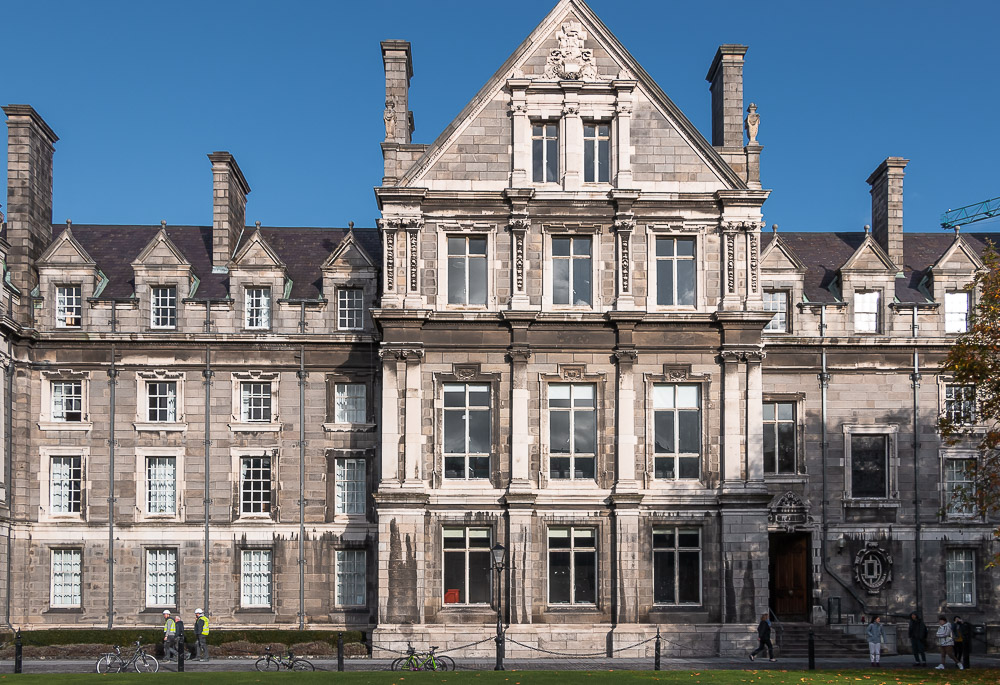
On the Ground of the Main Campus
The “stream” receded almost instantly as soon as it squeezed through the narrow opening-gate in the wall. Like ants charging out of an anthill, the students rushed in the opposite directions.
I proceeded straight ahead to the Campanile of Trinity College Dublin, university’s iconic bell tower. Large green lawns surrounded the towering structure, pleasantly contrasting with the grey color of the buildings. This area sees many students and faculty staff every day. Needless to say, it’s one of the main points of interest for the majority of the visitors.
Modeled after the collegiate universities of Oxford and Cambridge, Dublin’s main educational institution is compact. The main campus of Trinity College is divided into large quadrangles, often described as squares. The surrounding buildings look inward.
Smaller structures, hidden behind these pioneers of education, reluctantly disobey this architectural order. On the other hand, these nooks are quieter. You hardly see any tourists here. Leaving the noiseless, charming corners for the most curious, the majority of the visitors linger in the main square that houses two largest treasures: the Long Room of the Trinity College Library and the Book of Kells.
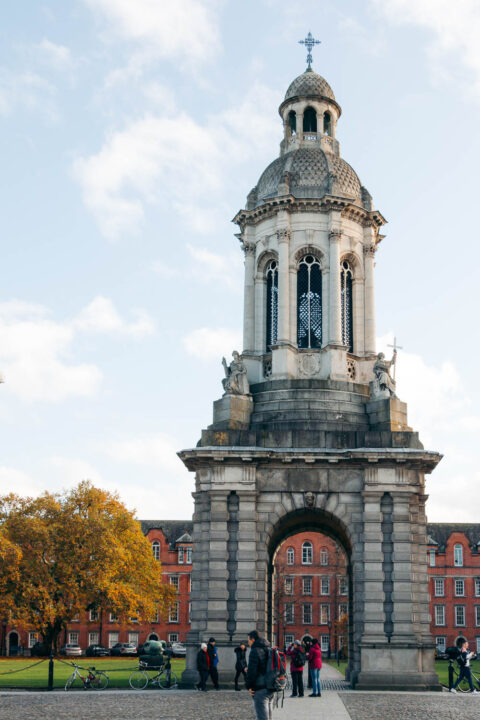
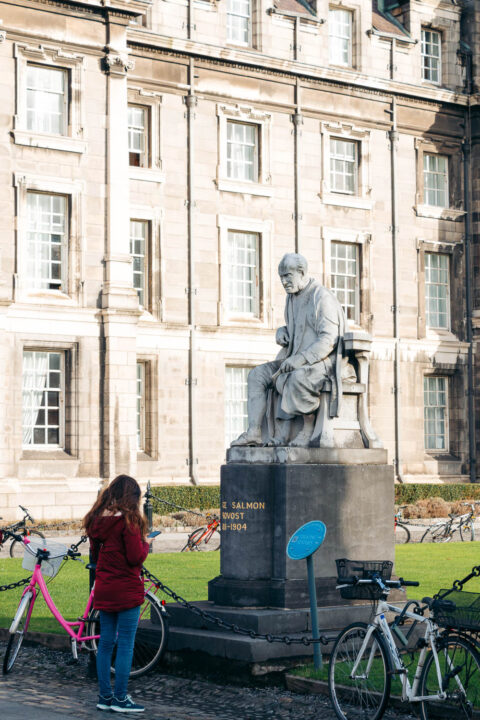
History of Trinity College Dublin
Trinity College Dublin was founded on March 3, 1592 by Elizabeth I. “The mother of a university” as she is often referred to, the queen modeled it after some of the most esteemed educational institutions in Europe.
Originally The College of the Holy and Undivided Trinity Queen Elizabeth near Dublin was set outside the city walls. Over the years as the city continued to grow, the university found itself in the heart of Dublin.
Many eminent Irish have attended Trinity College. The institution has shaped the minds of some of the country’s most influential poets, authors, playwrights, philosophers, mathematicians, and politicians, including Oscar Wilde, Jonathan Swift, William Rowan Hamilton, George Berkeley, and William Trevor.
The educational contributions of Trinity College span centuries. In fact, the establishment outlived many other prestigious universities, becoming one of the seven ancient educational institutions of Britain and Ireland and Ireland’s oldest surviving university.
The status and influence of Trinity College has grown stronger over the years. Today, it’s one of Europe’s elite institutions. In 2023, the university was ranked 161st in the world.
Up to this day, the main campus of the university is considered one of the most iconic in the world. It’s been included in an endless amount of urban legends and featured in many novels and films. That said, J.K. Rowling used the famous Trinity College Library as an inspiration for Hogwarts School in her fantasy novels about a young wizard named Harry Potter.
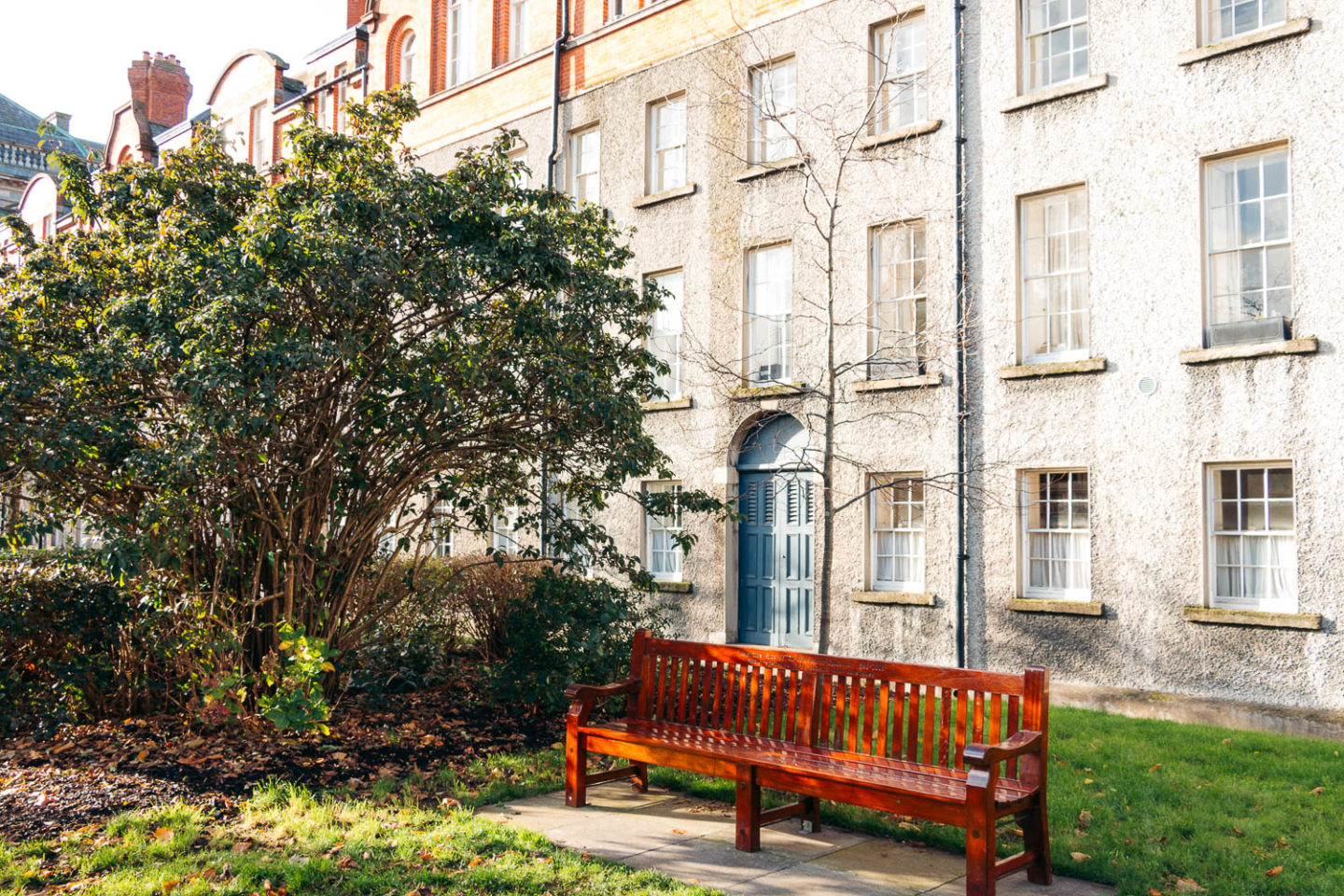
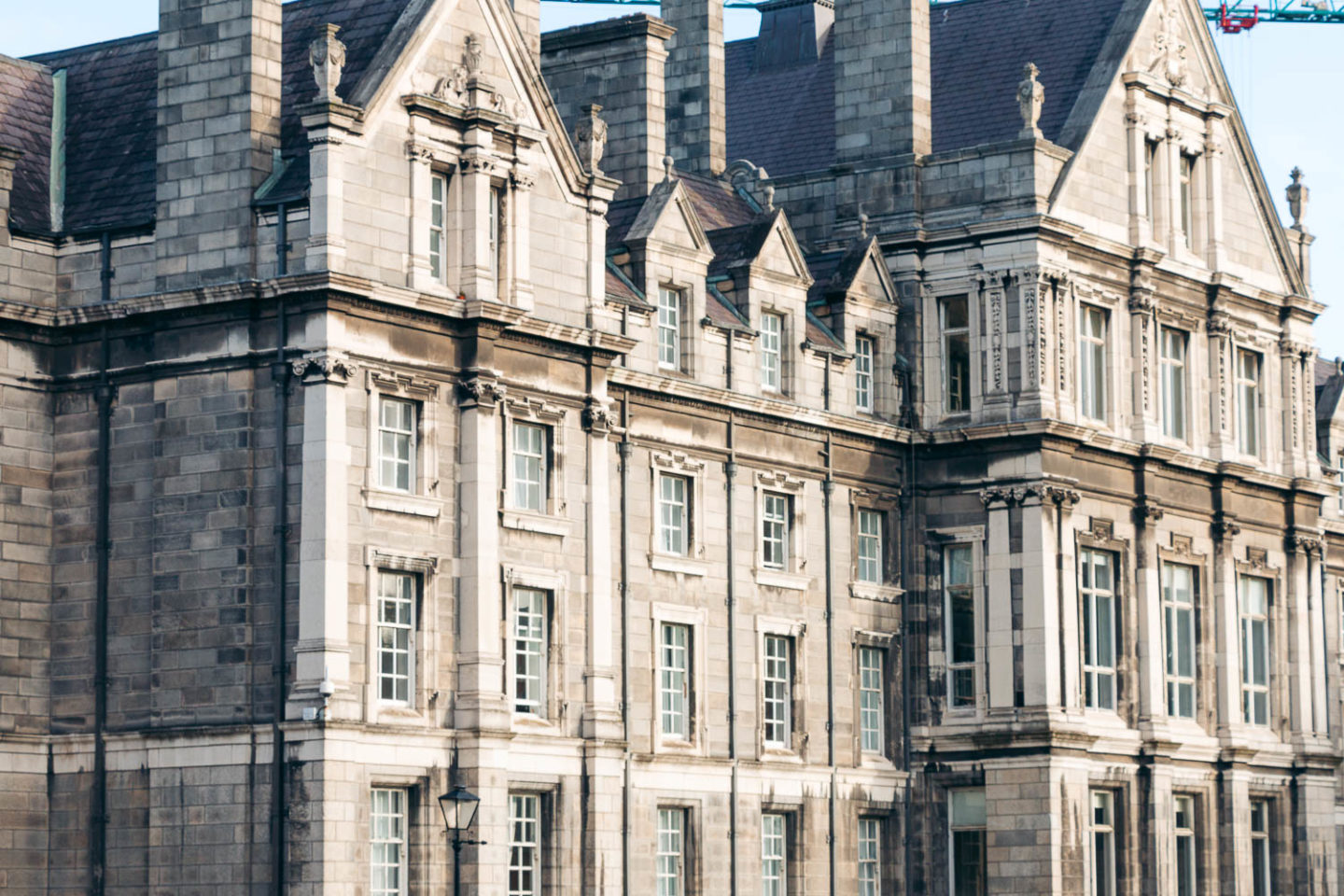
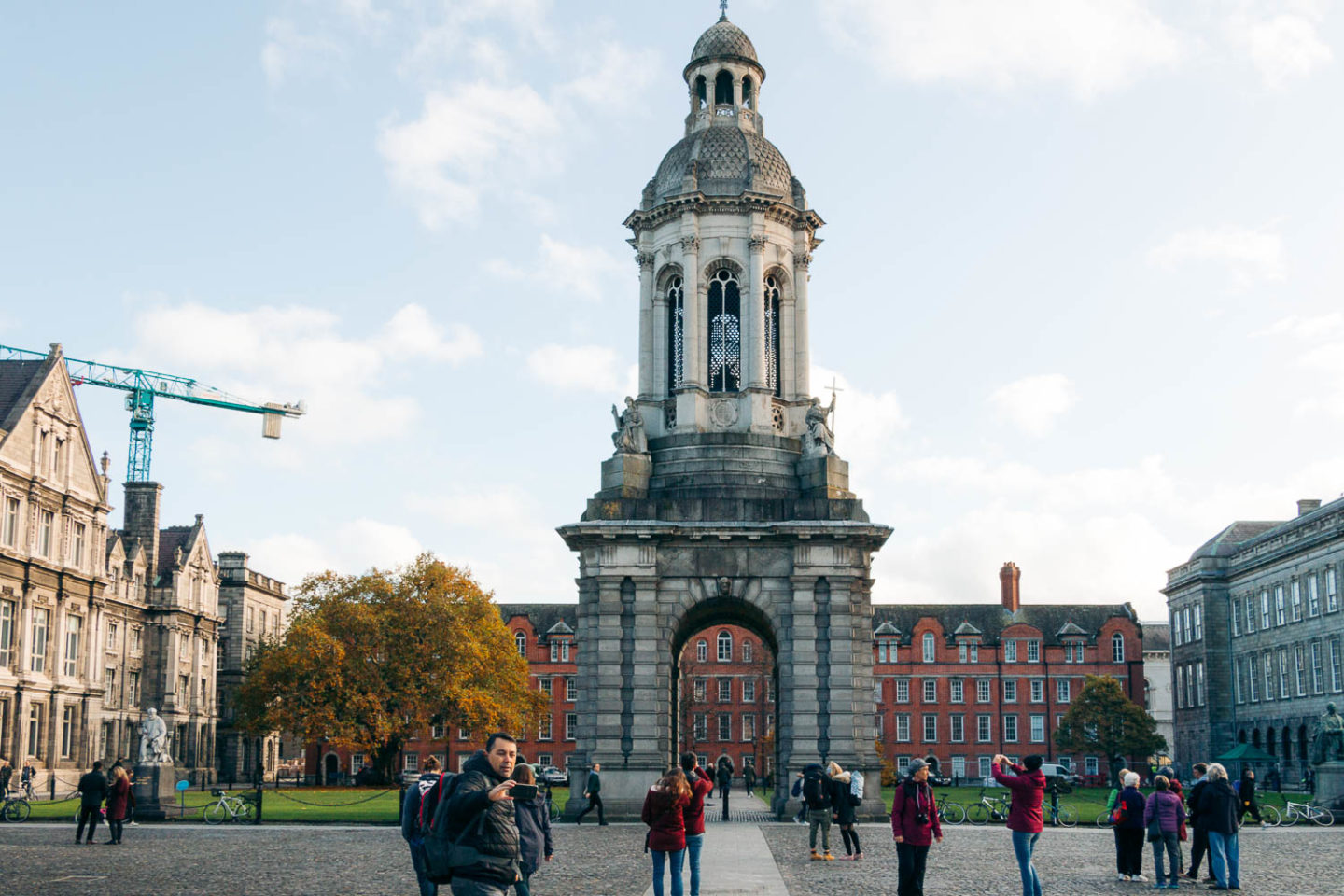
The Trinity College Library and the Book of Kells
The Trinity College Library has raised interest for years. Its massive floor-to-ceiling shelves, filled with books for every subject, allure people from all over the world, both readers and non-readers. The tranquil collegiate atmosphere of the library sets the mood for countless researches and studies.
And there is a lot to reference to. As a legal deposit library for Ireland and Great Britain, the Library of Trinity College houses nearly 7 million printed volumes and manuscripts. The most popular of them is the Book of Kells. The illuminated manuscript Gospel book joined the library’s expansive collection in 1661 after the destructive Cromwellian raid on religious establishments.
Yet the Book of Kells is not the only work worth mentioning here. In the Long Room, an iconic part of the library, resides a rare copy of the 1916 Proclamation of the Irish Republic. The same room harbors some 200,000 of the library’s oldest books, 40 marble busts of the college’s famous students, and a 15th-century wooden harp. The latter served as a model for the current emblem of Ireland.
Things to Know before Visiting the College
- You can roam and explore the university at your own pace. There is no fee to visit Trinity College Dublin. If you long to know more about the famous institution, join a guided tour led by current students.
- The admission to the Trinity College Library is not free. You can purchase a ticket on the university’s website. Alternatively, you can obtain a pass that allows you to explore the library and see some other landmarks of Dublin.
